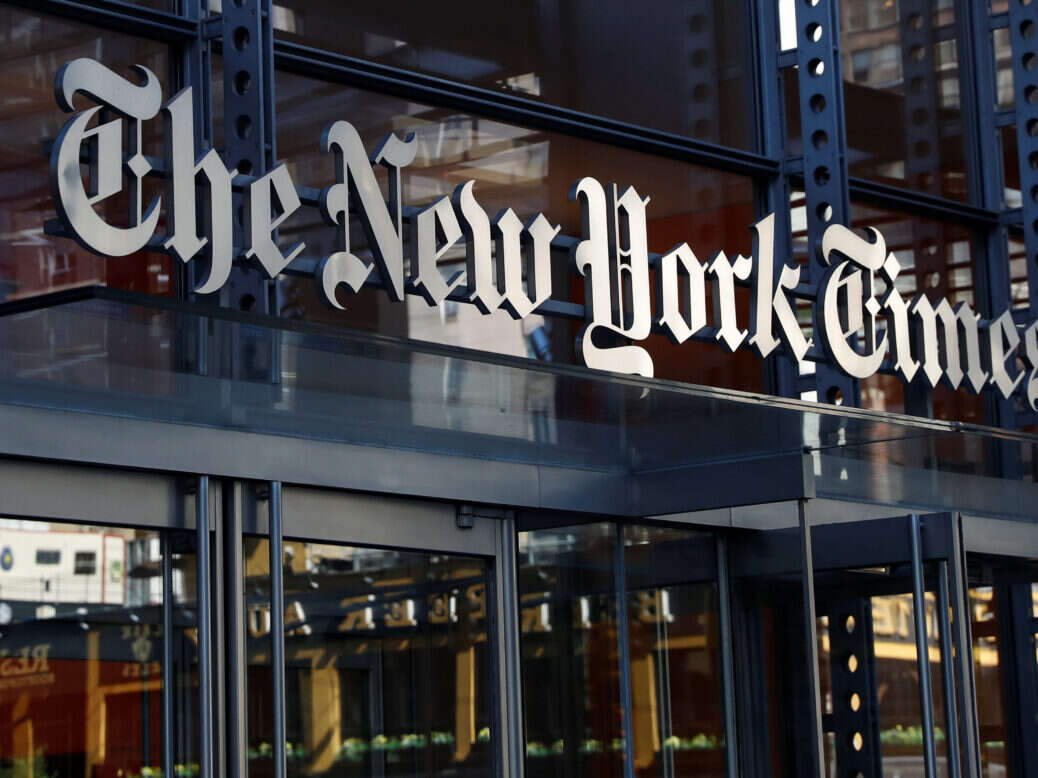
The New York Times has said in its Q3 earnings release it now has more than ten million digital-only subscriptions.
But profits remained flat on the previous quarter as recessionary fears continue to rattle advertisers.
Print advertising declined particularly dramatically, with the paper dropping nearly a fifth of its print advertising revenue quarter-on-quarter.
But at The Athletic costs are down markedly, and revenues have nearly doubled from when the NYT acquired the website.
The New York Times’ third quarter results for 2022, released on Wednesday, put revenue up 7.5% year-on-year to $547.7m. However, quarter-on-quarter it declined 1.4%, from $555.7m to $547.7m.
Costs also rose, up 9.5% year-on-year and 5% quarter-on-quarter to $503.8.
Profits nonetheless remained essentially flat, coming in at just above $51m.
Digital subscription revenue grew healthily year-on-year from $342.6m to $382.7m, a nearly 12% increase. The Times attributed that growth mainly to "the large number of subscribers whose introductory promotional subscriptions have graduated to higher prices, growth in the number of subscribers to the company’s digital-only products, as well as the inclusion of subscription revenue from The Athletic”.
Total subscriptions nosed up quarter-on-quarter from 10.56 million to 10.75 million. Digital-only subscriptions specifically - including subscriptions to The New York Times' news product, to The Athletic, and to the company's other products such as Games and Cooking - rose from 9.8 million to 10.02 million.
Individual digital-only subscribers have not yet met the eight-figure mark, standing at 8.6 million.
The publication announced in its Q4 2021 results that it had hit its target of ten million overall subscriptions (including both print and digital) three years early. It subsequently set itself the new target of hitting 15 million individual subscribers by 2027.
Year-over-year, the Times' digital advertising revenue increased 4.9% to $70.3m. That represents a 1.4% quarterly increase.
The company said: “Digital advertising revenue increased primarily as a result of higher direct-sold advertising at The New York Times Group and the addition of advertising revenue from The Athletic, which more than offset lower revenue from fewer programmatic advertising impressions and pressure from the macroeconomic environment.”
The third quarter saw The Athletic introduce adverts for the first time as part of NYT Co’s plans to get the sports site into the black.
Print advertising at the company, meanwhile, dropped 16.4% quarter-on-quarter to $40.2m. The figure is 8.5% down on the same quarter in 2021.
The New York Times said the print advertising decline came "primarily in the advocacy and media categories and was also impacted by macroeconomic factors".
In its outlook for the fourth quarter the company forecast a further decline in advertising. At The New York Times Group - which excludes The Athletic - the company anticipates decreases to both print and digital advertising revenue of approximately 10%. Subscription revenues, however, are expected to rise 17% to 20%.
[Read more: Adspend forecast: 2022 and 2023 predictions downgraded amid recession fears]
NYT chief executive Meredith Kopit Levien said in the release: "The biggest story of our third quarter was continued progress on the bundle, with mounting evidence that our strategy is working."
The New York Times has begun to more aggressively push its "bundle" offers, which bring together multiple Times products, i.e. The Athletic or its Games vertical (including Wordle), under a single subscription.
"It was our best quarter yet for bundle net additions," Kopit Levien said, "with a record number of starts and a record percentage of our total starts taking the bundle. As a result of our efforts, we now have more than a million bundle subscribers.”
Shortly after NYT Co’s Q2 results in August, activist investor Value Act revealed it had taken a 7% stake in the business, making it one of The New York Times’ largest shareholders. The investment company said it intended to push the Times to market its bundled subscriptions more aggressively.
Ben Smith, the former NYT media columnist now leading news start-up Semafor, wrote in October that Value Act had approached the Times “well before” its stake became public, and that its strategy pressure was reflected in Kopit Levien using the word “bundle” 40 times in the Q2 earnings call. (The term appears 16 times in Wednesday's earnings release.)
Over at The Athletic, which the Times acquired for $550m in January, the ship may be beginning to turn.
Revenues in the third quarter stood at $24.1m, compared with $12.2m in the first and $19.5m in the second. The Athletic's operating loss, which was $6.8m in the first quarter and $32.1m in the second, came in at $9.6m in Q3.
However the company indicated it expected operating costs to increase between 7% and 9% at the sports site in the fourth quarter.
The company did not break out how many subscribers The Athletic now has, but said the inclusion of the brand in its digital bundles increased the number of subscribers with access to the site by 600,000. In Q2 the Times reported the sports publisher had 1.7 million subscribers.
Picture: Reuters/Shannon Stapleton
Email pged@pressgazette.co.uk to point out mistakes, provide story tips or send in a letter for publication on our "Letters Page" blog
